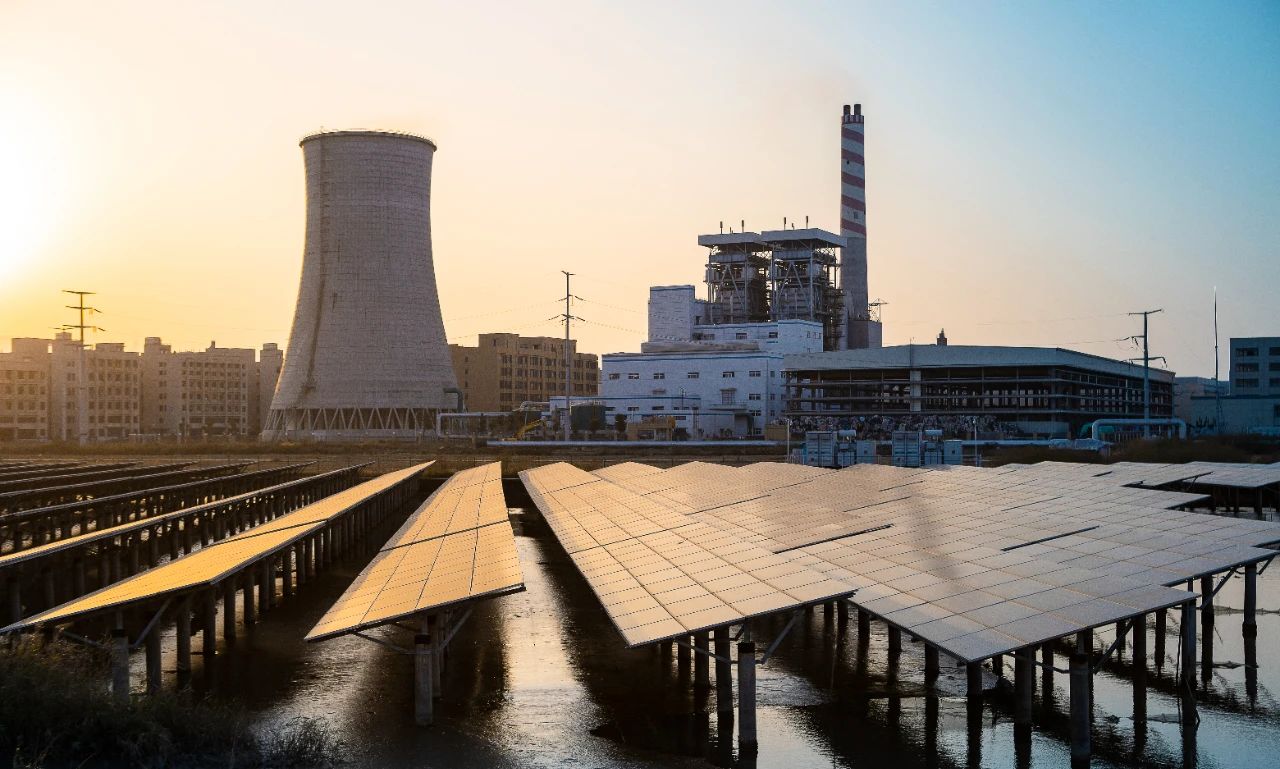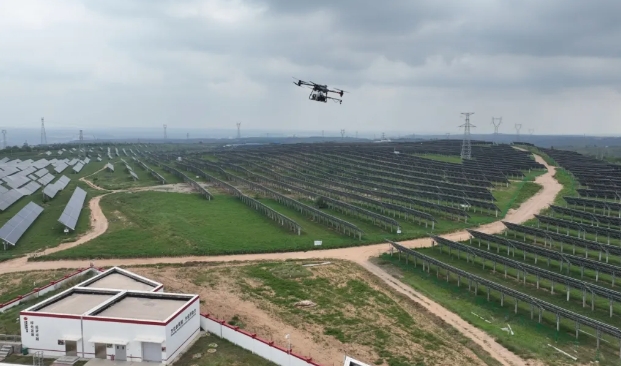Photovoltaic Cleaning Solutions, Using Flexible Robots to Assist in the Intelligent Operation and Maintenance
With the acceleration of global energy transformation, photovoltaic power generation has become an important path for China to achieve its "dual carbon" goals. By the end of June 2024, the installed capacity of photovoltaic power generation in China reached 713 million kilowatts, showing a strong growth momentum. In photovoltaic power generation, photovoltaic panels are core components, and their daily cleaning and maintenance are crucial, which directly affects the power generation efficiency and life of the entire system. According to the "Operation and Maintenance Regulations for Photovoltaic Power Stations", photovoltaic panels need to be cleaned regularly to maintain their efficiency. Clean and tidy photovoltaic panels can absorb solar energy more effectively, improve power generation efficiency, and reduce energy losses caused by the accumulation of foreign matter such as dust and bird droppings. At the same time, regular cleaning and maintenance can also extend the service life of photovoltaic panels and reduce overall operating costs.
Scenario Pain Points
Photovoltaic power station construction is mainly divided into two forms: centralized and distributed. Taking into account factors such as light and space costs, centralized photovoltaic power stations are often located in remote open areas such as deserts and Gobi, while distributed photovoltaic systems are mostly deployed on the roofs of various buildings, especially on the tops of many industrial park factories. Although these two forms have their own advantages, they both face severe challenges in cleaning photovoltaic panels. On the one hand, traditional manual cleaning is inefficient and has safety risks, making it difficult to meet daily operation and maintenance needs; on the other hand, although the application of automated equipment such as cleaning vehicles and cleaning robots can improve cleaning efficiency, it often requires frequent transfers, making it difficult to adapt to different photovoltaic panel array layouts, and high-altitude operations are difficult to deploy, resulting in low overall efficiency.
Pain points of distributed photovoltaic power station cleaning:
-High labor costs: Distributed photovoltaic power stations are usually located on the roofs of buildings. There are many and scattered distributed photovoltaic power stations, and the cleaning frequency is high, which leads to the need for manual cleaning. A lot of manpower is required, which is costly;
-High safety hazards: When performing manual cleaning operations at high places such as roofs, there are safety hazards such as falling from high altitudes. In some special industrial scenarios, there is also the risk of high-temperature and highly toxic exhaust gas;
-The cleaning effect is difficult to guarantee: Due to the large number and wide distribution of distributed photovoltaic power stations, it is easy to miss some areas during manual cleaning, resulting in inconsistent cleaning effects;
-The robot has low environmental adaptability for cleaning: It requires multiple transfers, relies on transfer channels or chassis, is costly, and has requirements for the spacing of photovoltaic panels and the flatness between photovoltaic panels. It cannot cross the rows of photovoltaic panels, which greatly limits the efficiency of cross-regional operations, such as between areas and between houses, affecting the overall efficiency.

Pain points of cleaning in centralized photovoltaic power plants
- Frequent transfer of cleaning equipment, low efficiency: Centralized photovoltaic power stations have a large area, and cleaning vehicles or cleaning robots need to be frequently transferred during cleaning, which not only increases the wear of the equipment, but also reduces the cleaning efficiency;
- Complex equipment and difficult operation: Automated equipment such as cleaning vehicles or cleaning robots are often complex in structure and difficult to operate, requiring professional personnel to operate and maintain;
- Poor equipment adaptability: Many centralized photovoltaic power stations are built in remote mountainous areas with complex terrain, which may have hillsides, potholes and other terrains. Traditional cleaning equipment has poor adaptability on these terrains;
- Inconsistent cleaning effect: Due to the large area of centralized photovoltaic power stations, blind spots or dead corners are prone to occur during cleaning, resulting in inconsistent cleaning effects and affecting the overall power generation efficiency.
Solution
In response to the needs and pain points of cleaning and maintenance of photovoltaic power stations, we launched a photovoltaic cleaning solution with a high-pressure cleaning system as the core, which includes a complete operation process from the preparation stage, the operation stage to the finishing stage and all the required materials and equipment. A30 is an aerial multi-angle high-pressure cleaning system derived from flexible robot technology. It focuses on solving operational problems such as high-altitude cleaning and spraying. It can hover in the air and achieve multi-angle efficient cleaning. Especially for cross-regional operations, it can quickly transfer and reach, greatly improving cleaning efficiency.
Program Benefits
Improve power generation efficiency: Through high-frequency, regular and efficient cleaning, the cleanliness of photovoltaic panels can be continuously maintained, and the power generation efficiency is stable and controllable, which injects strong impetus into the development of new energy;
Reduced labor and equipment costs: The integrated design of equipment and drones greatly reduces the dependence on manpower, reduces the use of additional equipment and complex machinery, and reduces the cost of equipment purchase and maintenance;
Easy to operate, low personnel risk: Through seamless integration with the flight control system, A30 can automatically complete the entire cleaning process in combination with the preset cleaning path, without the need for direct human operation, improving operation efficiency and safety;
Efficient cleaning, full coverage: Under hovering, the angle adjustment between vertical -60° to +35° and horizontal ±45° can be achieved. The 30L water tank capacity allows a large area of photovoltaic panels to be covered in a single operation, reducing the frequency of mid-way water replenishment and greatly improving work efficiency;
Convenient transportation and fast response: Modular design and snap-on installation enable rapid deployment and greatly shorten the response time;
Flexibility to adapt to multiple scenarios: The modular nozzle design of A30 enables it to adapt to cleaning tasks of different surfaces and different degrees of dirtiness.
Typical Cases
A photovoltaic power station is located in the southwest of Inner Mongolia, with an installed capacity of 250 megawatts and a site area of nearly 10,000 acres. It has more than 500,000 photovoltaic panels installed, distributed in deserts, Gobi and coal mining subsidence areas with harsh geographical environments. These areas not only have complex terrain, but are also susceptible to strong winds and sandstorms all year round, posing huge challenges to the maintenance and cleaning of photovoltaic panels.

In the face of these challenges, we customized a photovoltaic panel cleaning solution for our customers with the A30 high-pressure cleaning system as the core. In order to solve the problem of desert sand, we equipped it with nozzles that can achieve different spray widths. During the operation, customers can use the best nozzle according to the sand coverage, helping customers overcome the challenges brought by remote areas and harsh environments and achieve efficient cleaning of photovoltaic panels. The multi-angle, automated, efficient and safe features of the A30 not only reduce maintenance costs, but also significantly improve the power generation efficiency of photovoltaic panels, creating higher economic benefits for customers.
- Reinforcement Learning Enables Bipedal Robot to Conquer Challenging Terrain
- Drones for 3D Indoor Exploration-Cultural Relics Protection and Indoor Survey
- Industry Application: Intelligent Unmanned Operation Solutions for Lakes – Rapid Deployment for Continuous Protection
- High-Altitude Cleaning Case Introduction - Drone Spraying and Cleaning
- New Performance: SLAM Handheld Lidar Scanner + External Panoramic Camera New Combination

